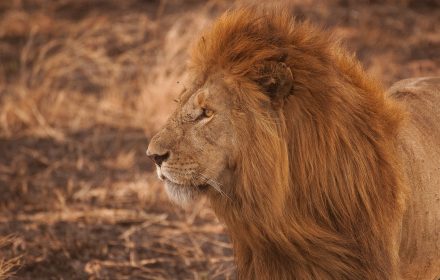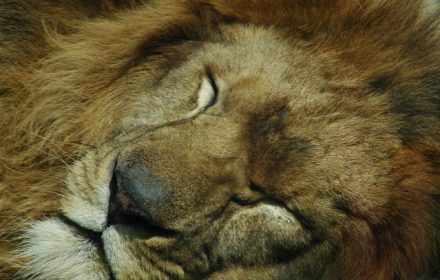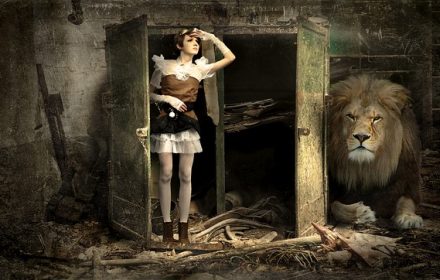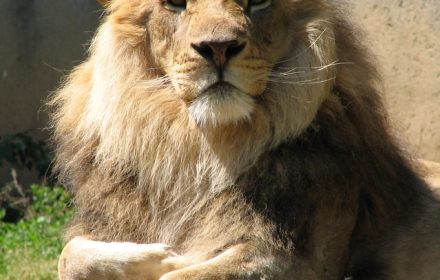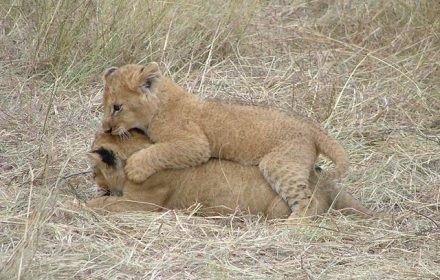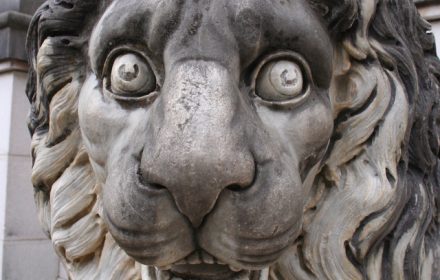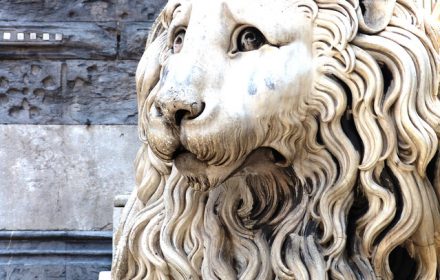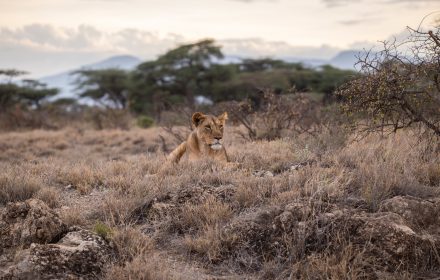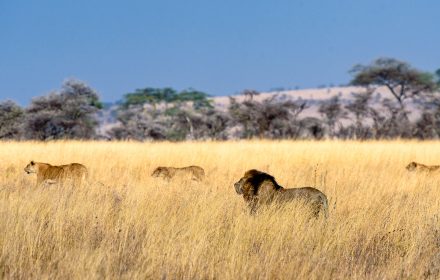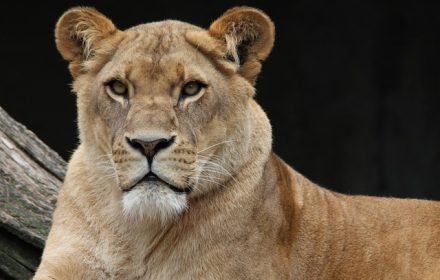Lions are susceptible to tick-borne diseases such as canine distemper and babesia. They contract distemper by eating sick domestic dogs coming from the neighboring villages. Babesia occurs when malnourished animals are vulnerable to disease during droughts. The combination of both these ailments has caused mass fatalities in lion populations. However, it is human conflict that is contributing more significantly to the decreasing rate of lion population. Because of this, Kenya Wildlife Service, in collaboration with local communities, has implemented conservation solutions. Hence, three organizations – Born Free, Lion Guardians, and American Fish and Wildlife Service – have created conservation strategies.
Lion
Lions are born with blue-grey color eyes, but it begins to change to an orangey brown. They have a small area called Jacobson’s organ on the roof of the mouth that allows them to taste smells. In complete contrast to humans, a lion’s tongue is so rough that if it licks the back of our hand a few times, there would be no skin left. All cats have whiskers, and the fat cats are no exception. A lion’s paws have five toes in the front and four in the back. lion has a long tail that helps it to balance.
To dream a lion can symbolize a defensive position. You might have a dangerous condition that has entered your life. It represents predatory feelings deep inside you. A lion in dreams also means having the ability to overcome some of your emotional issues by getting in touch with the feelings and taming them, if necessary. Some people dream of lions when they get a feeling of being preyed upon by enemies. Interestingly though, dreams of preying lion bring messages of self-sufficiency implying that you like to spend time alone because you are independent. Also, the lion spirit deals with power.
Lion is the only cat family member in which the males differ from the females in appearance – the mane. No other cat has it. Nobody knows for certain why a male lion has a mane and not a female. Researchers are still studying to understand as to why they have manes. So far, there are five theories as to why the males grow a mane. It protects the neck during fights. It keeps cool and clean in hot climates. The mane blends in and camouflages. The female lions get sexually attracted to the mane. And it intimidates other male lions.
Published research studies shed some light on the workings of a lion’s roar. The secret lies in the vocal cords. In most species, the vocal cords are triangle-shaped and protrude into the airway. But in lions, the protrusions are shaped like squares because of the fat in the vocal cord ligament. This square shape allows the tissue to respond efficiently to passing air, allowing the roar to be louder. The studies also suggest that there is a similarity between a baby’s cry and a lion’s roar. Both have vocal cords that are gel-like that make irregular vibrations to create sounds.
People have used lions as a symbol for thousands of years. In some nations, lion causes fear because of the great power it wields and the fact that it walks in silent moccasins. Similarly, lion symbolizes various things in different religions and cultures. Depictions of lions are a millennium old and appear in nations across Africa, Asia, Europe, and throughout the globe. The Flag of Iran bore the Sun and Lion until 1979 from the year 1946. The coat of arms of the Netherlands, the United Kingdom, Bulgaria, Canada, Czechoslovakia, India, Spain, and Sweden has the depiction of the lion.
The lion is the head of the animal kingdom and thus a non-fearing animal. Hence, the most consistent depiction is the king of jungle. Since time immemorial, people have drawn inferences regarding the characteristics and features of lions and used them in lion symbolism. These inferences have diverse symbolic meaning. For example, a male lion is a symbol of power, and the lioness is the Mother. And in psychology, the lion stands for the latent passions in the unconscious. Lion parts carry different symbolism as well. Its carcass associates with honey, its head with care and its tooth with eternity.
Centuries ago, lions were the most ubiquitous large land mammals after humans, but today the African lion population is estimated to be a pitiful 20,000 in the wild. According to the estimates from Kenya Wildlife Service out of that roughly around 2,000 remain in Kenya. But the country is losing around 100 of them on an annual basis. According to the Fish and Wildlife Service of America, over the coming 20 years, it is projected to lose 50% of its population. In the past 20 years, its population had collapsed by 50 percent, although some put the decline rate higher.
A lion’s meal starts with the entrails such as the heart, kidneys, and liver. But this feral cat’s cuisine tastes vary widely. Some lions will eat everything except the stomach. Others show an adamant preference for the intestines. Some male lions prefer the flesh and will eat the hindquarters, which is the fleshiest part, while the females eat the entrails. The last part they touch is the head, and it is very unusual for them to open the skull. It’s fast-working digestive system allows them to gorge an average of 18kg in one sitting, and go for seconds shortly after.
A lone lion finds it difficult to catch a prey because the prey they choose to kill is faster and nimbler than the lions and can easily outrun a single lion. So, to increase their success rate, they hunt together using teamwork and smart tactics to bring it down. They form hunting parties to attack the fast animals found in the savannahs. Interestingly, the group organizes the hunting methods very well in a scientific and ruthless manner. They work cooperatively to attack the prey by forming two groups. Each lioness develops her unique role contributing to the success of killing.

